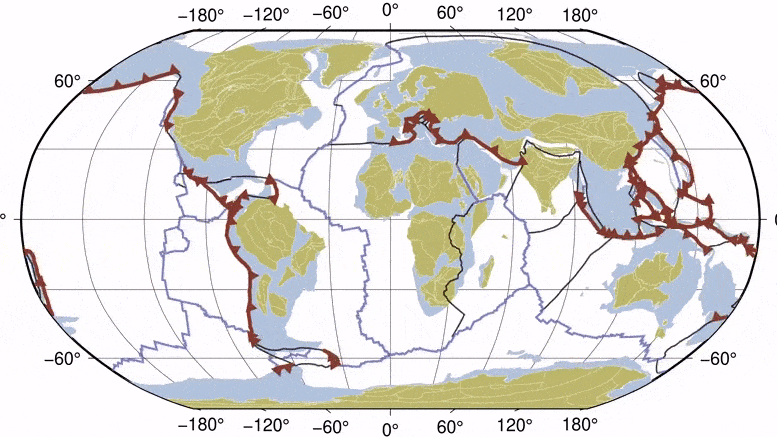
[ad_1]

New research is helping to understand how plate tectonics powers life on Earth.
- Plate tectonics are responsible for the deep carbon and deep water cycles.
- The layout of the continents has changed the sea level in the past.
- The evolution of life is altered by tectonics – continents are rafts with evolving species that intermingle when the continents combine.
- A growing focus on renewable and low-carbon technologies will mean we need to find more copper and other resources. To find these deposits, our new plate tectonics models will help reduce the environmental footprint of mineral exploration and extraction.
Geoscientists have released a video that shows for the first time the uninterrupted movement of Earth’s tectonic plates over the past billion years.
The international effort provides a scientific framework for understanding planetary habitability and for finding the essential metal resources needed for a low-carbon future.
It reveals a planet in constant motion as land masses move around the Earth’s surface, showing for example that Antarctica was once at the equator.
The video is based on new research published in the March 2021 edition of Earth-Science Reviews.
Video showing the movement of Earth’s tectonic plates over the past billion years. Credit: Dr Andrew Merdith / University of Lyon
Co-author and Academic Lead of the EarthByte Geoscience Group at the University of Sydney, Prof. Dietmar Müller, said: “Our team has created a whole new model of Earth’s evolution over the past billion years. .

Professor Dietmar Müller of the EarthByte group at the School of Geosciences at the University of Sydney. Credit: Britta Campion
“Our planet is unique in the way it hosts life. But this is only possible because geological processes, like plate tectonics, provide a planetary survival system.
Lead author and creator of the video, Dr Andrew Merdith began working on the project while a PhD student with Professor Müller at the School of Geosciences at the University of Sydney. He is now based at the University of Lyon in France.
Co-author Dr Michael Tetley, who also completed his PhD at the University of Sydney, told Euronews: “For the first time, a complete model of tectonics has been built, including all limits”
“On a human scale, things move in centimeters per year, but as we can see from the animation, the continents have been everywhere in time. A place like Antarctica, which today we think of as an inhospitable cold and icy place, was in fact once a fairly pleasant holiday destination on the equator.
Co-author Dr Sabin Zahirovic from the University of Sydney said: “Planet Earth is incredibly dynamic, with a surface made up of ‘plates’ constantly jostling each other in a way unique among known rocky planets. These plates move at the speed of nail growth, but when a billion years are condensed into 40 seconds, a fascinating dance is revealed.
“The oceans open and close, the continents disperse and recombine periodically to form immense supercontinents.”
Earth scientists from every continent have collected and published data, often from inaccessible and remote areas, that Dr Andrew Merdith and colleagues have assimilated over the past four years to produce this billion-dollar model. years.
This will allow scientists to better understand how the Earth’s interior convects, chemically mixes, and loses heat through seabed propagation and volcanism. The model will help scientists understand how the climate has changed, how ocean currents have changed and how nutrients have flowed from the depths of the Earth to stimulate biological evolution.
Professor Müller said: “Simply put, this comprehensive model will help explain how our home, planet Earth, has become habitable for complex creatures. Life on Earth would not exist without plate tectonics. With this new model, we are closer to understanding how this beautiful blue planet became our cradle.
Reference: “Extending Complete Plate Tectonic Models in Deep Time: Relating the Neoproterozoic and the Phanerozoic” by Andrew S. Merdith, Simon E. Williams, Alan S. Collins, Michael G. Tetley, Jacob A. Mulder, Morgan L . Blades, Alexander Young, Sheree E. Armistead, John Cannon, Sabin Zahirovic and R. Dietmar Müller, December 24, 2020, Earth-Science Reviews.
DOI: 10.1016 / j.earscirev.2020.103477
[ad_2]
Source link